Last updated: 23 May 2007
|
|
Last updated: 23 May 2007 |
Some LXD55/LXD75 users have sent me examples of their astrophotography. If you have some examples you would like included here please send me a description of how you made the astrophotos and a copy of the images as GIF or JPEG files (due to internet email gateway issues, please send only one image file per message or ZIP or Stuff multiple files). Send to mweasner@optcorp.com. Alternatively, if you have created your own web page with your examples please let me know and I'll include a link to your site.
| Submitted by: Dieter.Wolf@DNSint.com [23 May 07] |
|---|
|
very very nice nature photographs from your last trip to OO - I start
liking them more and more.
I used a clear night a few days ago to catch high in the sky M63 from my suburban garden. Until that night I only could image the brighter central part of the galaxy, but this time...have a look. 2007-05-19 00:30 CEST, LXD55 SN-10 with ToUCam SC1 at prime focus, composit of 60x20s & 40x30s exposures giving a total exposure time of 40 minutes. This may be the longest exposed picture I have ever taken. You see at least two spiral arms, the grainy outer parts of the spiral structure and you even can estimate some star clusters and star burst regions within them. I had to work hard on that picture and expose very bright to show the weaker outer parts which extend up to the 8m foreground star - if I had 1m more of star light and 1m less of street light..... |
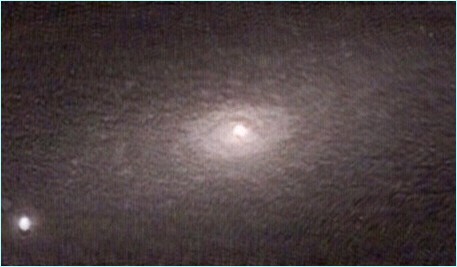
|
| Submitted by: Dieter.Wolf@DNSint.com [27 Mar 07] |
|
great your last OO report; it's a pleasure to read it. And nice your
Zodiacal Light. But the most interesting picture for me is the Pinwheel
Galaxy M101. You should give her a bit of contrast rework and then show it
- uncropped - in 'Your Gallery'; I think it's really a beauty!
I have to contribute a 'beauty' too (from last weeks excellent conditions - now winter came back and it's snowing...) M82 - a composite of three avi's with 10x10s & 10x30s & 20x40s exposures (excellent - unguided - tracking that night without having done something 'special') - MEADE LXD55 SN-10 with ToUCam SC1 at prime focus, 20 minutes total exposure time. Never did it that detailed before... |
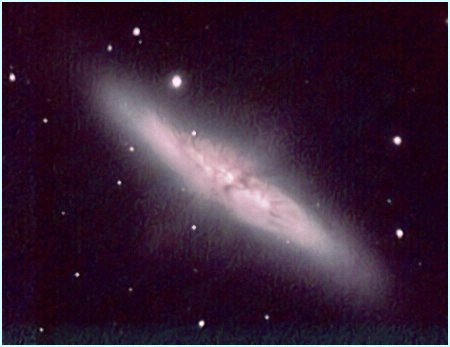
|
| Submitted by: Dieter.Wolf@DNSint.com [19 Mar 07] |
| M97 - Owl Nebula - I have seen phantastic pictures of it and - never in my life - managed to get a reasonable shot by myself! It is large and dim, about 10m visually and 12m for photography - that is my 'backyard limit. It is difficult to see the planetary throug the scope and even more difficult to 'estimate' what you may see on the lcd of the notebook. But I did it - close to zenith - yesterday! Not very pretty, well.....had to work hard on it and even size it down 2007-03-13 22:30 CET LXD55 SN-10 with ToUCam SC1 at prime focus 30x30s exposures / darkframe |
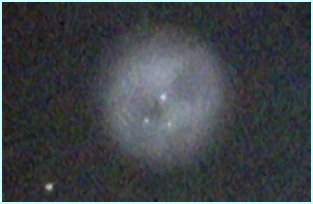
|
| The other planetary that night - NGC 3242 - fitted much more better - very bright and small, a good one for a webcam chip. Though roughly of Jupiter's size I never would have called it 'Ghost of Jupiter' - ever seen a blueish Jupiter? I would call it 'an eye'. 5s exposures were enough (130 of them) and the only problem was low declination with -18,5 degrees close to a neighboring roof top. Astonishing enough that did not cause much problems. Nice details in that abt. 15x25 arcsecond small elliptic planetary; even the halo. |
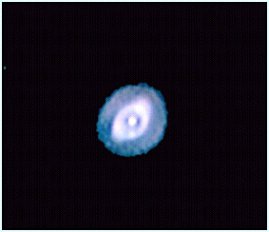
|
| Submitted by: Dieter.Wolf@DNSint.com [19 Feb 07] |
| hope your journey to OO was a success and the weather did what the 'good' forecasts said ;-) We have clear and relatively warm (around freezing) nights here in Southern Germany; unusual for that time of the year, so I went outside into the garden on Friday and 'shot' two deep sky objects. M79 in Lepus; a strange GC as it is NOT situated in the galactic halo but somewhere 'outside' (60.000 ly off the galactic center) and astronomers think today it has somehow 'drifted' into our galaxy from outside (a nearby dwarf galaxy). M79 is located very deep in southern skies (-24,5 degrees) and my telescope was nearly horizontally pointing to it (only 15 degrees high) so it's not a 'goodie' but nice having done it. I found only very few pictures of this small (abt. 8 arcsec) but bright (abt. 8m) GC in the web. 2007-02-16 22:00 CET; LXD55 SN-10 with ToUCam SC1 at prime focus; 35x5s exposures |
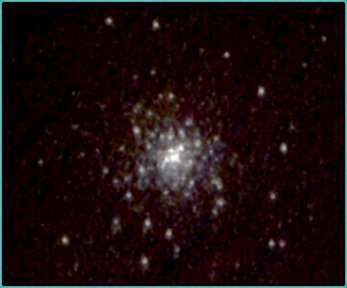
|
| Much more famous and nearly at zenith M81. It's hard to catch the outer regions of the galaxy from city location (I saw only the bright nucleus) but I tried to add many single shots and reworked hard (not a 'pretty picture') to bring up some of the spiral arms and dark lanes between them. The galaxy is very large. 2007-02-16 22:20 CET; LXD55 SN-10 with ToUCam SC1 at prime focus; 100x15...25s (over 30 min. total exposure time); unfortunately M81 drifted away to the edge of the chip |
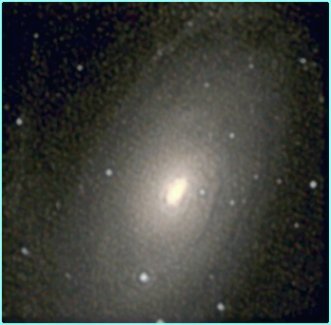
|
| Submitted by: alex wilson (esraguin@btinternet.com) [26 Jan 07] |
| Here is my best pics of 2006 taken with my dsi on my lxd55 8in sc , Can now take exsposures of upto 1minute, I find for me that meades FITS3P are easy to process ,I collect all my data through envisage software and then take the combined frame into pixlnsight and use the histograms section to produce these images.Thanx for all your hard work on ur wonderful site all the best for 2007. Alex M Wilson CLINTERTY OBSERVATORIES. |
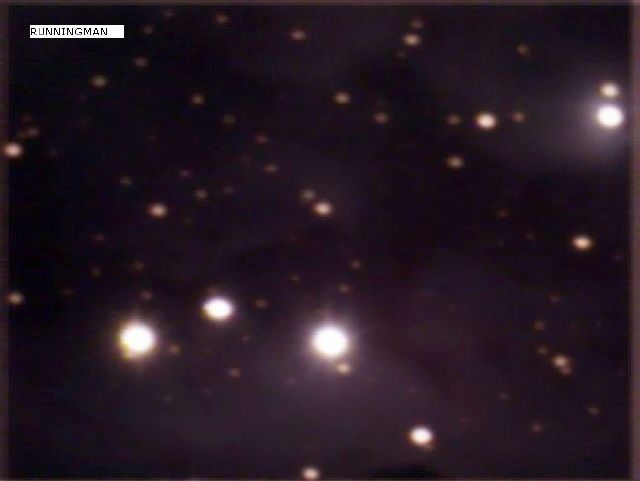 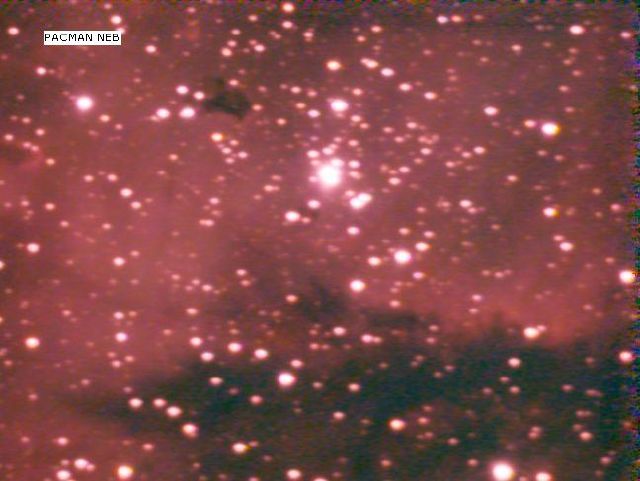 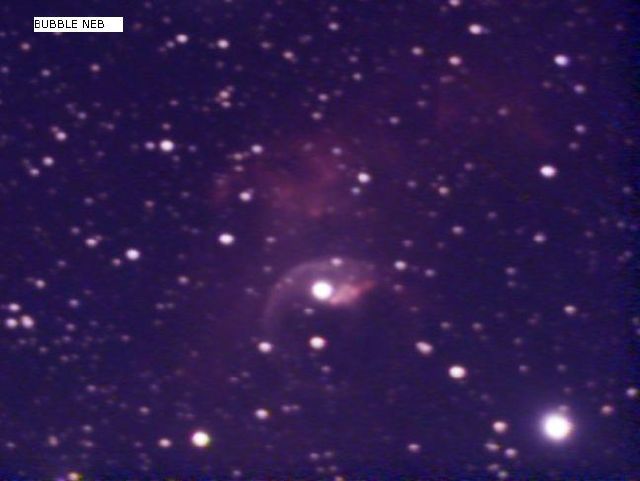 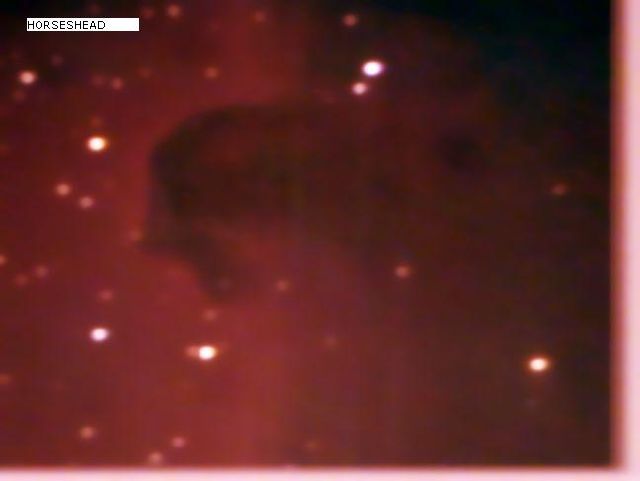 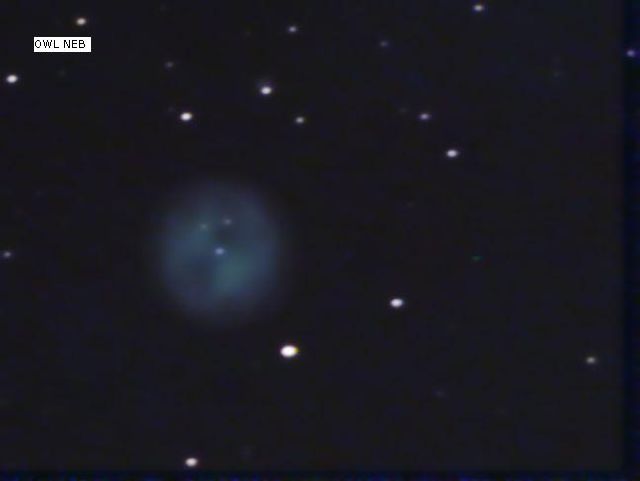 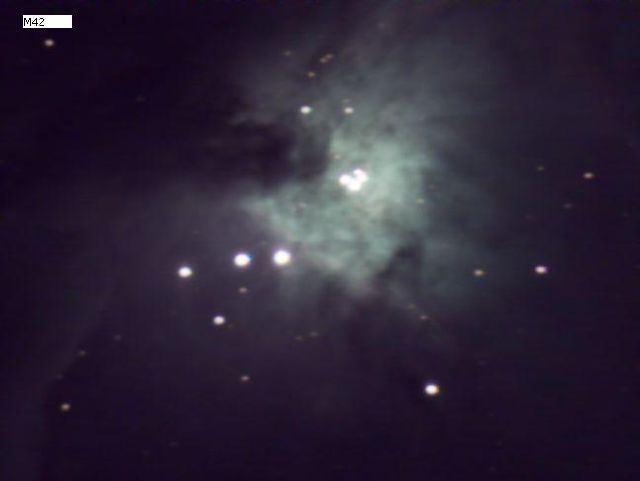 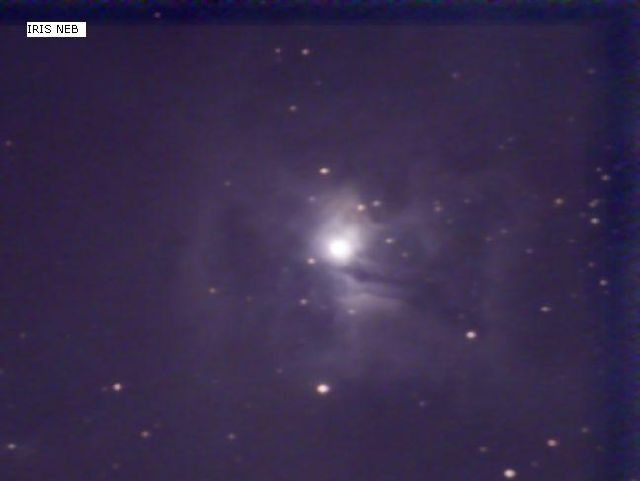 
|
Go to the July-December 2006 Guest Deepsky Astrophotography Page.
Go to the January-May 2006 Guest Deepsky Astrophotography Page.
Go to the September 2005 Guest Deepsky Astrophotography Page.
Go to the July-August 2005 Guest Deepsky Astrophotography Page.
Go to the April-June 2005 Guest Deepsky Astrophotography Page.
Go to the January-March 2005 Guest Deepsky Astrophotography Page.
Go to the August-October 2004 Guest Deepsky Astrophotography Page.
Go to the March-May 2004 Guest Deepsky Astrophotography Page.
Go to the 2003 Guest Deepsky Astrophotography Page.
Go to back to my LXD55 Home Page.